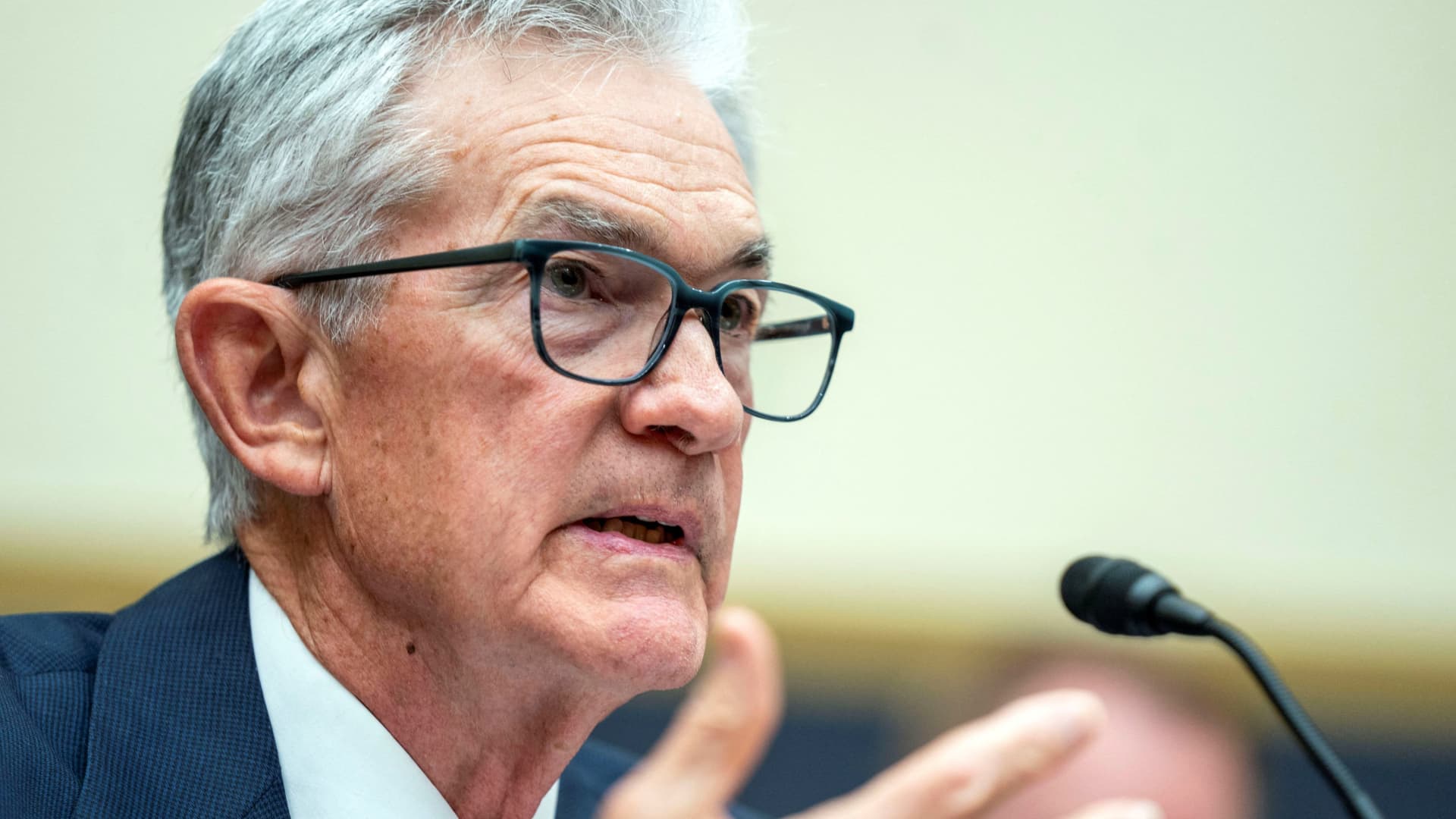Federal Reserve Chair Jerome Powell speaks during a House Financial Services Committee hearing on the “Federal Reserve’s Semi-Annual Monetary Policy Report” on Capitol Hill in Washington, U.S., March 6, 2024. Bonnie Cash | ReutersIf there was any doubt before, Federal Reserve Chair Jerome Powell has pretty much cemented the likelihood that there won’t be interest rate reductions anytime soon.Now, Wall Street is wondering if the central bank will cut at all this year.That’s because Powell on Tuesday said there’s been “a lack of further progress” on lowering inflation back to the Fed’s 2% target, meaning “it’s likely to take longer than expected” to get enough confidence to start easing back on policy.”They’ve got the economy right where they want it. They now are just focused on inflation numbers. The question is, what’s the bar here?” said Mark Zandi, chief economist at Moody’s Analytics. “My sense is they need two, probably three consecutive months of inflation numbers that are consistent with that 2% target. If that’s the bar, the earliest they can get there is September. I just don’t see rate cuts before that.”With most readings putting inflation around 3% and not moving appreciably for several months, the Fed finds itself in a tough slog on the last mile toward its goal.Market pricing for rate cuts has been highly volatile in recent weeks as Wall Street has chased fluctuating Fed rhetoric. As of Wednesday afternoon, traders were pricing in about a 71% probability that the central bank indeed most likely will wait until September, with the implied chance of a July cut at 44%, according to the CME Group’s FedWatch gauge.As for a second rate cut, there was a tilt toward one in December, but that remains an open question.”Right now, my base case is two — one in September and one in December, but I could easily see one rate cut, in November …
Article Attribution | Read More at Article Source
[mwai_chat context=”Let’s have a discussion about this article:nnFederal Reserve Chair Jerome Powell speaks during a House Financial Services Committee hearing on the “Federal Reserve’s Semi-Annual Monetary Policy Report” on Capitol Hill in Washington, U.S., March 6, 2024. Bonnie Cash | ReutersIf there was any doubt before, Federal Reserve Chair Jerome Powell has pretty much cemented the likelihood that there won’t be interest rate reductions anytime soon.Now, Wall Street is wondering if the central bank will cut at all this year.That’s because Powell on Tuesday said there’s been “a lack of further progress” on lowering inflation back to the Fed’s 2% target, meaning “it’s likely to take longer than expected” to get enough confidence to start easing back on policy.”They’ve got the economy right where they want it. They now are just focused on inflation numbers. The question is, what’s the bar here?” said Mark Zandi, chief economist at Moody’s Analytics. “My sense is they need two, probably three consecutive months of inflation numbers that are consistent with that 2% target. If that’s the bar, the earliest they can get there is September. I just don’t see rate cuts before that.”With most readings putting inflation around 3% and not moving appreciably for several months, the Fed finds itself in a tough slog on the last mile toward its goal.Market pricing for rate cuts has been highly volatile in recent weeks as Wall Street has chased fluctuating Fed rhetoric. As of Wednesday afternoon, traders were pricing in about a 71% probability that the central bank indeed most likely will wait until September, with the implied chance of a July cut at 44%, according to the CME Group’s FedWatch gauge.As for a second rate cut, there was a tilt toward one in December, but that remains an open question.”Right now, my base case is two — one in September and one in December, but I could easily see one rate cut, in November …nnDiscussion:nn” ai_name=”RocketNews AI: ” start_sentence=”Can I tell you more about this article?” text_input_placeholder=”Type ‘Yes'”]

